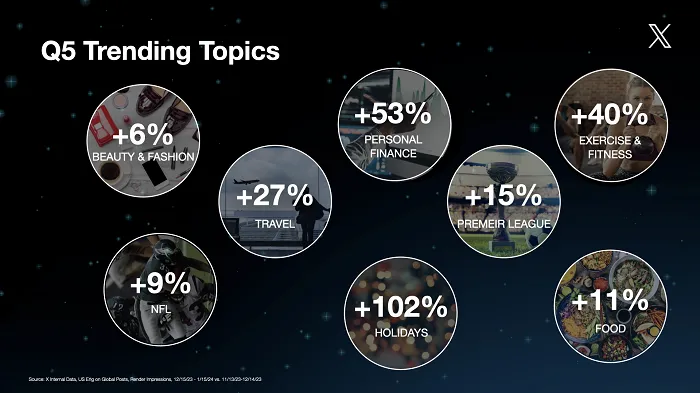Consumer behavior has always been a constantly shifting target. Recent years have seen events that caused these shifts to happen at an unprecedented rate, dramatically altering how consumers and brands interact.
The pandemic redefined our cultural norms and launched a seismic shift in buying behavior. Industries that once depended on brick-and-mortar locations and in-person meetings needed to adjust their service models quickly to keep up with an evolving consumer journey. As the pandemic ended, it became clear these were not just trends but permanent changes.
As a result, today’s world has given rise to a new breed of empowered consumers who expect more from the brands they support. Here’s why brands must adopt a new approach to customer connection and how we can meet the demands of empowered consumers in this landscape.
Consumer behavior has shifted
During the pandemic, consumers relied more on these devices for information, connection and online shopping. As a result, ecommerce and digital storefronts have surged. There are also over 16% more online shoppers in 2023 compared to 2020.
This reflects a fundamental shift in consumer engagement with businesses, driven by convenience and information access on digital platforms. Online research has become a key part of the consumer journey. Nearly two-thirds of purchases now begin online, according to Zippia.
Easily accessible reviews, comparisons and expert opinions empower consumers to scrutinize options and make informed decisions. To stay competitive, companies must adapt their digital marketing strategies.
An increase in consumer-driven touchpoints
Ten years ago, brands drove two-thirds of touchpoints across advertising, direct marketing and in-person experiences, according to Cadillac’s CMO Melissa Grady Dias during a June 2023 Millennium Alliance keynote. Today, that statistic has flipped, with consumers driving 66% of touchpoints via search, third-party sites and social media, according to Terakeet, an owned asset optimization agency.
Terakeet also analyzed more than 86 million monthly searches over three years and found that, on average, informational and transactional searches increased by 46.3% across three industries. This shows not only are the nature of brand-to-consumer interactions changing, but they’re also increasing.
Consumers now demand more information and brand trust before buying. This means businesses must invest in a solid online presence, reputation management and strong brand assets.
Digital advertising is also less efficient and impactful than it once was. Growing privacy concerns and widespread ad-blocking software hinder its efficiency. Audiences increasingly distrust and avoid traditional ads like banners and pop-ups.
The advertising challenge
Consumers no longer want to be interrupted, especially with content irrelevant to their immediate interests. Despite these challenges, ad spending rises, raising questions about its effectiveness compared to alternative strategies.
Dig deeper: How marketers can use behavioral data to improve customer experiences
Considering how significantly consumer behavior has changed, marketers must also come to terms with the new customer journey. Gone are the days of linear paths to purchase. The customer journey has evolved into a complex web of experiences and interactions that vary in length and direction.
Consumers now navigate multiple touch points across various channels, creating a dynamic and non-linear journey.
Platforms like TikTok, Amazon and Google provide consumers with spaces to seek recommendations, voice opinions and engage more directly with brands.
The rise of artificial intelligence (AI) tools and their ease of use will also play an increasingly pivotal role. Chatbots and virtual assistants are poised to take on a large role in the path to purchase.
Dig deeper: 3 steps to navigating the complex customer journey
How brand marketers can adapt to stay impactful
To navigate this landscape successfully, marketers must strike a balance between resource allocation, channel selection and crafting a unified brand narrative. The empowered consumer offers a unique opportunity for brands to connect in new ways with their audiences.`
Businesses can adapt by mapping and understanding these multifaceted journeys. Ensure you have consistent and engaging experiences across all touchpoints to meet the demands of today’s consumers.
The key is to create a comprehensive network of content assets that tap into every step of the customer journey and proactively answer the questions and concerns that may arise.
Marketers must create content that aligns with the consumer journey, meeting needs that range from information-gathering to comparing and, ultimately, purchasing. This proactive strategy enhances customer experience and improves long-term brand equity in an increasingly competitive digital landscape.
Know your target consumers
To establish authority and engagement through a content strategy, learn about your consumers, listen to their needs and solve problems.
Several data sources offer actionable insight into what your consumers want and where they’re looking for help.
- Search intent provides a real-time look at your audience’s most honest questions.
- Social media engagement can indicate consumers’ most trusted sources of information, messaging that appeals to them and where their overall interests lie.
- Online traffic patterns offer a look into users’ movement through their journey and where they gain or lose interest.
These data points offer valuable insights into consumer preferences and inform your marketing strategy.
Expand your owned asset library
Apply this audience insight to create and optimize content that reflects consumer interests and journey stages. For instance, if you’re a retail marketer aiming to grow a beauty brand:
- Use consumer behavior data to understand what information consumers seek before making a purchase.
- Address their needs by creating informative content like videos, blog posts, ingredient guides, or web pages.
This approach builds trust, making it easier for consumers to remember your brand when they’re ready to buy. It goes beyond promotion, establishing your business as a trusted resource and authority in your field by addressing consumer pain points and providing valuable information and solutions.
Future trends and considerations
As consumer behavior evolves rapidly, we must remain agile and receptive to change. Stay consistently informed about shifting consumer trends, preferences and habits — especially as our knowledge and use of AI continue to expand.
Staying attuned to changes helps businesses seize opportunities, avoid outdated strategies and remain aligned with the audience’s needs and behaviors, ensuring lasting engagement and loyalty.
function getCookie(cname) {
let name = cname + “=”;
let decodedCookie = decodeURIComponent(document.cookie);
let ca = decodedCookie.split(‘;’);
for(let i = 0; i <ca.length; i++) {
let c = ca[i];
while (c.charAt(0) == ' ') {
c = c.substring(1);
}
if (c.indexOf(name) == 0) {
return c.substring(name.length, c.length);
}
}
return "";
}
document.getElementById('munchkinCookieInline').value = getCookie('_mkto_trk');
The post Rise of the empowered consumer: Navigating shifting consumer behavior appeared first on MarTech.






































































